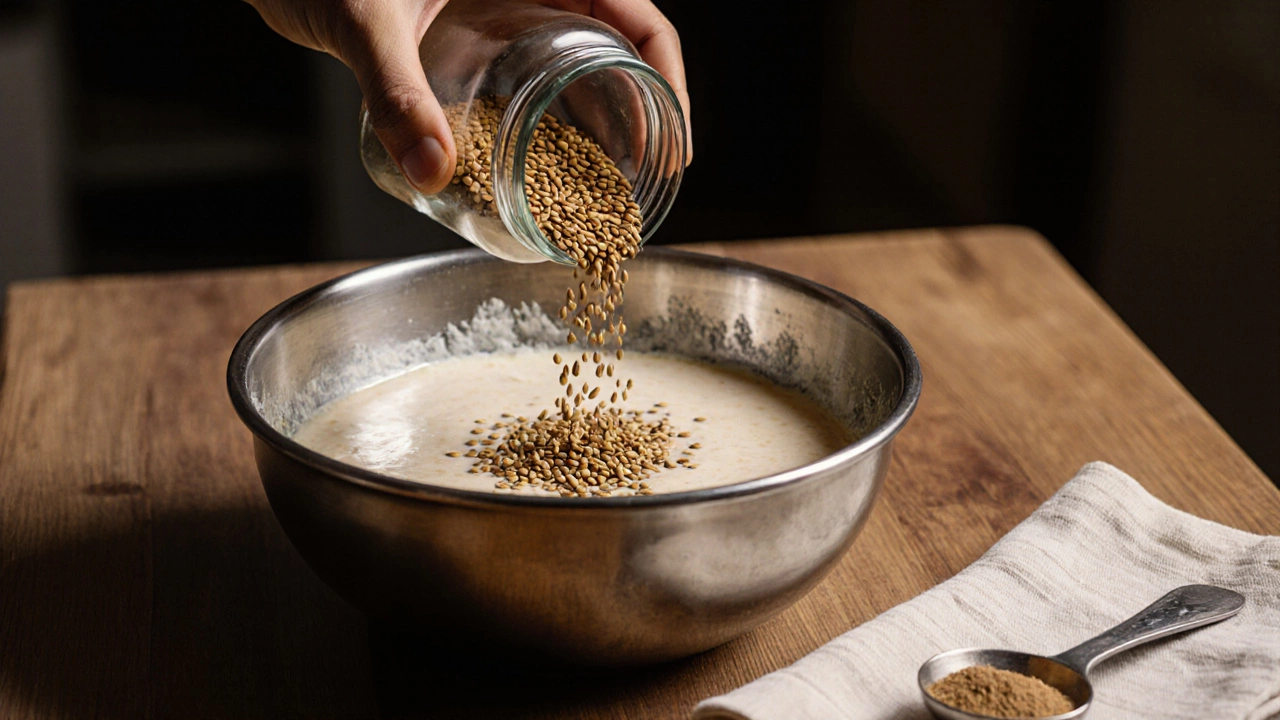Why Add Fenugreek to Dosa?
When cooking with fenugreek, a bitter, aromatic legume seed also called methi. Also known as methi, it brings a distinct nutty‑sweet aroma that can turn a simple batter into a memorable bite. Pair that with dosa, a thin, fermented rice‑lentil crepe popular in South India, and you have a classic canvas for spice experimentation. South Indian cuisine, the culinary tradition of India's southern states, relies heavily on balanced spice blends to create layers of taste and texture. Adding fenugreek to this tradition isn’t random – it’s a purposeful enhancement that touches flavor, nutrition, and even digestion.
First, consider the flavor triangle. Fenugreek’s slightly bitter edge balances the natural sourness of fermented dosa batter, while its sweet, maple‑like notes echo the caramelized surface of a well‑cooked crepe. In other words, fenugreek complements the tangy notes of the batter and the crispy, buttery finish of the cooked dosa. This synergy is why many home cooks and chefs swear by a pinch of fenugreek powder or a few crushed seeds in their batter. The result is a more rounded taste that feels both familiar and exciting, making each bite stand out without overwhelming the palate.
Beyond flavor, fenugreek packs a nutritional punch that aligns perfectly with the health goals of South Indian meals. The seed is rich in protein, fiber, and minerals such as iron and magnesium. It also contains soluble fiber that can help regulate blood sugar levels—something many people appreciate in a carbohydrate‑heavy dish like dosa. Moreover, fenugreek has been shown to aid digestion by stimulating the secretion of gastric juices. When you add it to a fermented batter, the combined probiotic effect and fenugreek’s digestive properties can reduce bloating and improve nutrient absorption, turning a tasty snack into a gut‑friendly option.
How do you actually work fenugreek into your dosa recipe? The simplest method is to grind a teaspoon of whole seeds into a fine powder and stir it into the batter after fermentation. If you prefer a subtler touch, soak a handful of seeds in the water used for soaking the rice and lentils; the seeds will release their flavor into the liquid, and you’ll still get that aromatic kick. Some cooks also toss a few fresh fenugreek leaves (methi) into the batter for a greener hue and an extra layer of bitterness that mellows during cooking. No matter the technique, the key is to keep the amount modest – too much can dominate the delicate balance of taste.
Now that you understand why fenugreek belongs in dosa, you’re ready to explore the many ways it can upgrade your breakfast, snack, or dinner. Below you’ll find a curated set of articles that dive deeper into related topics: the science behind fermentation, spice‑blend secrets for South Indian breads, and health‑focused variations of classic dishes. Each post builds on the core idea that a thoughtful pinch of fenugreek can transform ordinary batter into something truly special. Happy cooking, and enjoy the flavor adventure ahead!
Why Fenugreek Is Added to Dosa Batter - Benefits, Flavor & Tips
Discover why fenugreek is added to dosa batter, how it boosts fermentation, flavor and nutrition, and get practical tips for perfect dosas every time.
